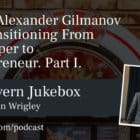WordPress 5.0, “Bebo,” is a shift of the highest order for the platform. Block-based editing, under the name of “Gutenberg,” is an entirely new way to publish content. It adds a world of flexibility when writing, and it opens the gates for transforming much of the broader WordPress experience moving forward.
[youtube https://www.youtube.com/watch?v=72xdCU__XCk?version=3&rel=1&fs=1&autohide=2&showsearch=0&showinfo=1&iv_load_policy=1&wmode=transparent&w=1024&h=576]
TinyMCE has been the core of the WordPress writing experience for, well, forever. Users will be able to continue using TinyMCE with the Classic Editor plugin, which will be especially useful for those web applications with significant amounts of structured content that will take time and reprogramming to fit the new editing experience.
The need for a new editor has been a wide-held concern in the WordPress community for a long time. Gutenberg has been more than two years in the making, and it involved dozens of full-time or near full-time contributors at times. Automattic, the company behind WordPress.com and other popular WordPress products, has invested a great deal in Gutenberg’s development, as have many other companies and individuals — but the bulk of development and decision-making has been by Automattic employees.
There have been critiques that the process for decision making has been too closed off and rushed toward the end of the development cycle for the purpose of delivery by WordCamp US despite ongoing concerns, particularly around accessibility.
5.0 had to ship eventually, and the process has been a long one. It was a complete shift from the traditional development cycles, which I discussed with Matt Mullenweg at WordCamp US two years ago.
I have personally held the view that now is as good a time as any to release 5.0, though the exact timing is a burden on folks traveling to WCUS, particularly considering that it was just a few days notice; it is putting a kink in the plans of many.
Timing aside, Gutenberg is, I believe, an important step and a big test for WordPress. It is imperative that the platform evolves to be both more powerful and easier to use — an enormously difficult dual challenge that I have advocated as an important feat to accomplish for several years now.
WordPress is the easiest full-featured content management system to use. But it is more difficult than many alternative publishing platforms — particularly hosted ones. Drastic changes, like Gutenberg, are necessary to continue being a preferred platform for end users. Being easy to use and customize got WordPress to the dominant position it is in today, and I believe it is extremely important to continue in that trajectory to maintain that position.
At the same time, as WordPress is being used in ever more advanced applications, developers need powerful, scalable solutions. WordPress has made great strides over the years to accommodate this use case, from various APIs to assist in new data structure creation, to the REST API. Gutenberg offers much promise to continue this trend, as it is quite extendable and also flexible for deployment on the web, in native apps, and on both front-ends and backends.
I believe 5.0 is a huge step forward for the platform. The journey is not without its issues, and there is much work to do, but WordPress needed and continues to need big changes and advancements to maintain its position at the top of the content management food chain.
People are using WordPress for all sorts of things, whether traditional publishing, eCommerce, application frameworks, and much more. I’m excited to see what Gutenberg brings to further these applications. Strictly as an editor, it’s far from perfect, but it’s an important step in the right direction.
Get familiar with WordPress 5.0
Here are some links to places to learn more about the new editing experience and WordPress 5.0.
- WordPress 5.0 release post
- Gutenberg designer and developer handbook
- WordPress.org/Gutenberg teaser, where you can use it live.
- WordPress 5.0 Field Guide
- Gutenberg on GitHub (This will be deprecated but offers a nice history.)
- Changes to the REST API
- Media in 5.0
- The Twenty Nineteen default theme and Gutenberg support in other default themes.




